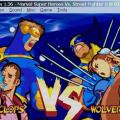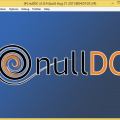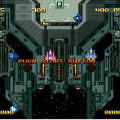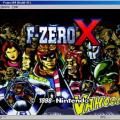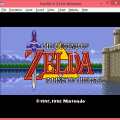- 1 reply
- 1,537 views
- Add Reply
- 0 replies
- 2,075 views
- Add Reply
- 0 replies
- 1,777 views
- Add Reply
- 0 replies
- 1,678 views
- Add Reply
Dualis 20.1 released

2006-04-21
* GPU: Fixed some texture transparency problems
* GPU: Fixed some bugs when rendering 16-color rotoscale OBJs
* GPU: Fixed some bugs when rendering extended palette rotoscale BGs
* MMU: Added experimental SPI touchscreen handling
* MMU: Fixed some bugs in the handling of long filenames in the FAT
* GUI: Improved timer event handling a bit
* GUI: Fixed .zip loading
* GUI: Added support for .7z loading
The SPI touchscreen handling is not perfect yet and only works somewhat, so the old faked method is still used as a fallback for homebrew ROMs using libnds.
>> Get it HERE.
MAME dats for 0.105u2

Mameinfo.dat v0.105u2 -> http://www.mameworld.net/mameinfo/
History.dat 1.06k -> http://www.arcade-history.com/
Info.dat.105u2 -> http://www.hawq.dsl.pipex.com/mame32Hp4.htm
Story.dat and Mamescore.ini -> http://www.arcadehits.net/mamescore/home.php?show=files
Wayder cheat file 0.105u2 -> http://wayder.hp.infoseek.co.jp/cheat/index.html
Easymame 5.3.1 released

EasyMame 5.3.1 release info:
- Improved : Now also shows the roms path when scanning for roms.
- Improved : Optimised the realtime searching code.
- Changed : Mame option 'Priority' is now by default 0.
- Fixed : Small issue in the cycle screenshot mode.
- Fixed : When resetting the counters two times in a row EasyMame crashed.
- Fixed : Memoryleak in the realtime search code.
>> Get it HERE.
Aaron Giles WIP

It’s About Friggin’ Time!April 20th, 2006
A while back, I emulated a couple of the early Gaelco 3D games, Radikal Bikers and Surf Planet. I knew at the time that there was a third game on almost identical hardware, which was the racing game Speed Up, but unfortunately the dump of that game we had was incomplete. Over the past couple of years, I’ve managed to acquire two different board sets for Speed Up, yet getting a good dump of the 42-pin mask ROMs on the board has been challenging to say the least. Guru and I even manually mapped the address and data lines back to the ADSP-2105 that runs the sound, and confirmed that they matched the standard pinout of an ST 27C160/27C322, yet my programmer would always end up with garbage.
A couple weeks ago, I was given a tip that sometimes these mask ROMs have either the /CE or /OE signals inverted. Last night I finally got around to trying it out, and sure enough, if I tied the /OE signal to Vcc during the dump, I got a good read of the sound and polygon data ROMs. Seemingly victorious, I also dumped the texture ROMs in the same way, but discovered that I had another obstacle in my way in reading those.
With the texture ROMs, my programmer complained that pins 15, 17, 19, 21, 23, 25 and 27 weren’t providing good connections. Curious, I looked at the pinout and discovered that these were the D8-D14 lines on the chip. This is a good indication that these ROMs are intended to be read in BYTE mode, not WORD mode. Of course, my programmer only handles WORD mode, which makes things tricky but not impossible. I simply had to read the ROM twice, tying the A”-1″ pin alternately to GND and Vcc, and then merge the results, removing the bogus upper byte of each word.
And so, at last, we have Speed Up. It pretty much worked straight away, apart from some input port problems, and looks pretty nice. Reminds me a bit of Cruisin’ USA, except a bit smoother since the Gaelco hardware supports bilinear filtering.
>> View the pictures HERE.

